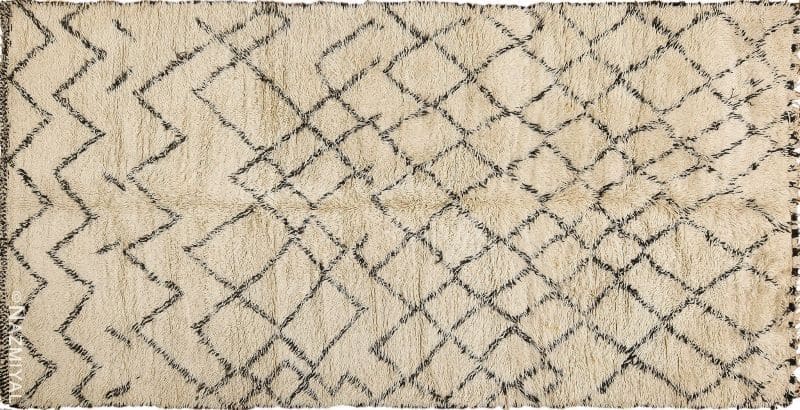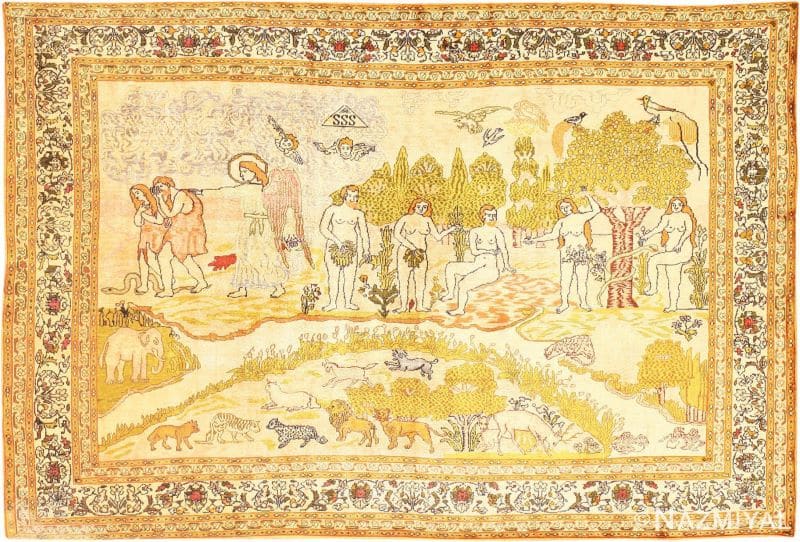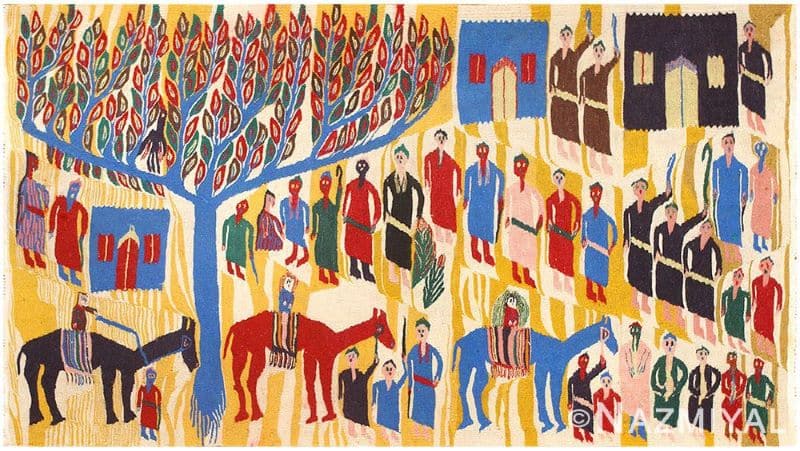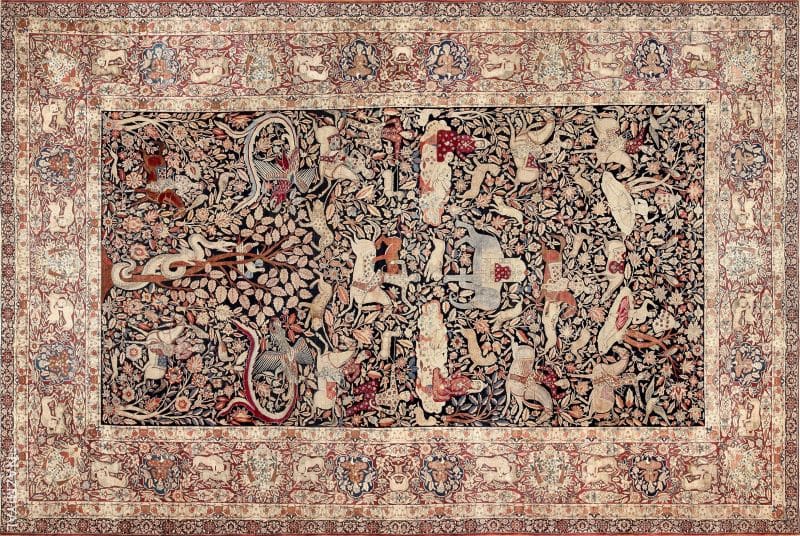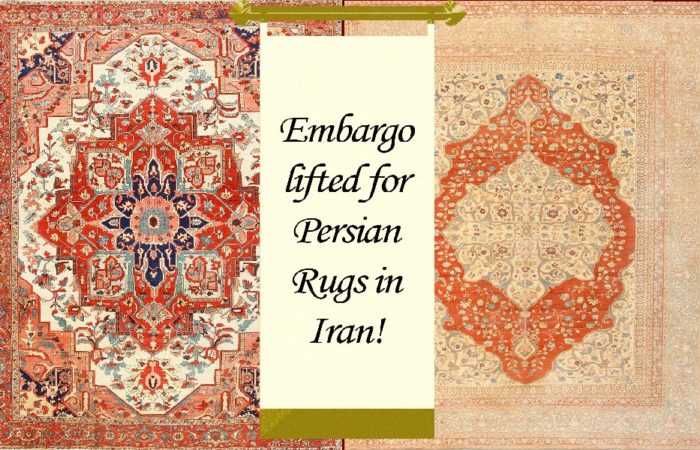Exploring The Fascinating Stories That Rugs Have To Tell
Persian and antique Oriental rugs are some of the most beautiful treasures in the world. They are just as much a piece of the world’s artistic heritage as the paintings of Leonardo da Vinci or Michelangelo. There are many antique rugs in museum collections that show the same artistic skill and training as the great painting masters. These carpet designers are great masters in their medium. Carpets are more than an object of beauty; they are story rugs and they tell the story of the rise of human civilization and the rise and fall of great empires.
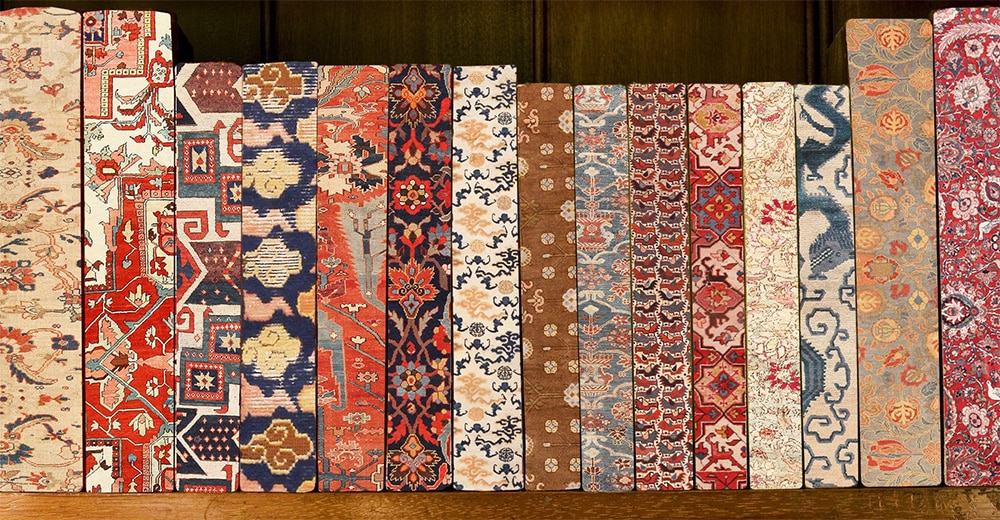
Story Rugs
The first hand knotted pile carpets were made for practical purposes. Man began weaving carpets to keep out the cold of the dirt floors. They lined their walls and tents with them to keep out the blistery cold night winds. The area rugs served a functional purpose, but it is apparent from the beautiful designs, even in some of the oldest rugs in the world, that they were much more than that. They had a deeper meaning.
Taking a look at the past through the stories that rugs tell
About the same time humans started putting pictures on cave walls, they started adorning their clothing and furnishings with symbols and decorations. Linguists know that many of these paintings have a significant meaning and tell the story of the lives of the people who created them. Surprisingly, some of these designs have survived into today’s traditional carpet designs.
Some of the best surviving example of ancient symbols that still have meaning in today’s carpet world are the carpets of the Beni Ourain or Berber tribes of Morocco. These tribes tattoo certain ancient design symbols on their bodies to protect them from elements such as the evil eye, scorpion bites, infertility, or to give them prosperity and good fortune. They also used these ancient symbols on the carpets that they created.
Some of these symbols are the same symbols found in ancient cave paintings of the area made by Neolithic man. The symbols used in the Moroccan rugs of the Berber tribes allows us to look into our human ancient past. According to linguists, many of the symbols found in the carpets of the Berber tribes have the same meanings as those found in the cave paintings. To look at them is to take a glimpse at the first language of human beings.
As time went on, carpet designs became more complex, and weaving techniques developed that could produce more complex designs. Yet, the ability of carpets to convey a meaning or represent a certain moment in history remained. Many of these carpets have representations of the rulers of great lands and represent the accomplishment of civilizations.
The weaving of a carpet is a deliberate piece of artwork. It takes planning and preparation. The weaver had to have access to the materials, which often came from sheep, local plants, and later, the cultivation of silk. The fibers had to be produced, processed, and dyed into the beautiful colors. The work and effort that went into the production of the colored fibers from which to weave the carpets mean that they were a precious commodity. The weaver did not want to waste them. Therefore, the creation of the carpet was a deliberate artistic act, whether the rug weaver was located in a remote tribe in the mountains, or in one of the weaving centers that later developed.
Story Rugs and the Rise of Empires
Carpet weaving played an important role in the rise of the Ottoman and Safavid Empires. They developed into a formal artistic medium, and schools were established where weavers and designers were trained. Area carpets and rugs were produced to appeal to a global market. They became an essential economic commodity for export and became a status symbol. Handmade carpets were often only affordable to noblemen and the wealthy ruling class.
Carpets were featured in the paintings of Italian Renaissance artists. They were exported to the European courts and found their way into many famous cathedrals and mosques. Throughout the development of the history of the carpet from a utilitarian piece of furniture to a refined art form, certain motifs and symbols remained and became a part of the tradition.
One still finds symbols such as flowers, animals, the sun, moon and stars in the formal carpets produced in the cities. However, it seems that a more extensive collection has been preserved in the tribal carpets of the tribes of the Anatolian people and other remote tribal cultures. Many times, these ancient symbols are simple and represent oral traditions that have been passed down for hundreds of generations.
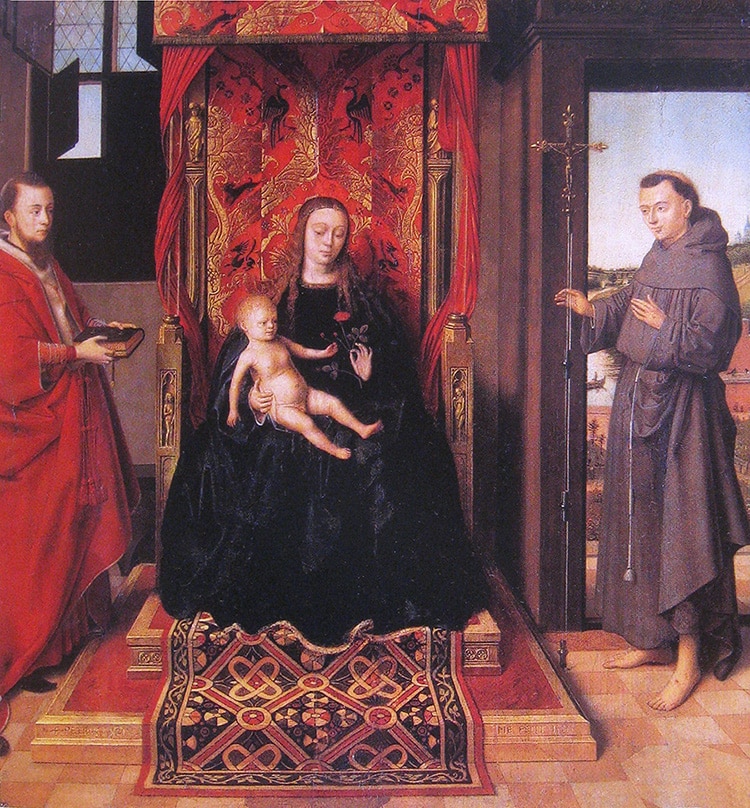
Renaissance Painting Circa 1457 Of The Virgin and Child with Saints by Petrus Christus
As one can see, knotted pile carpets are more than just a piece of artwork or a piece of furniture. They tell the story of the rise of humanity, and each one has a history that goes back to man’s ancient beginnings.
We invite you search our rugs online and explore the different patterns and colors that we have to offer. Maybe, you will find that one piece that speaks to you in a language all its own.
Below we have put together a selection of rugs that tell stories. Some may be more obvious than others but they are all pretty spectacular:
This rug blog about story rugs was published by Nazmiyal Antique Rug Gallery in NYC.

